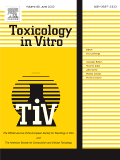>
The effect of endoplasmic reticulum stress inductors and proteaosome inhibitors on leukemia cell line L1210, SKM-1 and MOLM-13 with induced P-glycoprotein overexpression
function goBack() { window.history.go(-1); }
Principal investigator: Mario SeresDuration: January 2016 – December 2018Coordinating institution: Institute of Molecular Physiology and Genetics, SAS, Bratislava |
Annotation:The leukemia mouse cells L1210 in which was induced the P-glycoprotein (P-gp) expression of either by selection with vincristine or transfection with the P-gp encoding gene. We have found that cells with P-gp overexpression, have developed resistance not only to substrates of P-gp, but also to cisplatin (antineoplastic agent, which is not P-gp substrate) and endoplasmic reticulum (ER) stress inducing substances. Further, we observed significant differences in interaction with lectins, between P-gp positive and P-gp negative L1210 cells, indicating extensive remodeling of surface carbohydrates, associated with the P-gp expression in these cells. The presence of P-gp in leukemia cells induces large changes of cell regulatory processes involving protein phosphorylations and glycosylations and the regulation of the apoptosis progression. New knowledge of P-gp regulatory role may contribute to a better understanding of the P-gp mediated multidrug resistant mechanism of leukemia cells to cytostatics. |
Keywords:multidrug resistance, P-glycoprotein, stress of endoplasmic reticulum , inhibitor of proteaosomal activity, leukemia |
Objectives:P-gp expressing cells L1210 are less sensitive to the following inducing substances of SER: tunicamycin, which is an inhibitor of N-glycosylation; thapsigargin, the inhibitor of Ca2+ -ATP-ase of endoplasmic reticulum, blocks the endoplasmic reticulum luminal calcium storage process. The cells cultured in the presence of these substances does not result in P-gp glycosylation, inspite of this, P-gp is still embedded in the plasma membrane and its transport activity is not affected. This situation is in contrary to wide accepted concept of protein glycosylation blocking in the endoplasmic reticulum, leading to its subsequent ubiquitination and proteaosome degradation. The present project will study this conflict and its impact on procedures of proteins quality control by glycosylation in the endoplasmic reticulum. The topic of the project will be addressed in two stages:
These issues will be studied in the project using the above mentioned cell model or a human leukemia cell line with induced overexpression of P-gp by adaptation to various chemotherapeutic agents such as vincristine, mitoxantrone or azacytidine. |
Publications: |
 |
Messingerova L, Imrichova D, Coculova M, Zelina M, Pavlikova L, Kavcova H, Seres M, Bohacova V, Lakatos B, Sulova Z, Breier A: Different Mechanisms of Drug Resistance in Myelodysplastic Syndromes and Acute Myeloid Leukemia. (Chapter 7), In Myelodysplastic Syndromes (Ota Fuchs Ed.), InTech, ISBN 978-953-51-2586-0, 2016, pp 181-200 |
 |
Pavlikova L, Seres M, Imrichova D, Hano M, Rusnak A, Zamorova M, Katrlik J, Breier A, Sulova Z. The expression of P-gp in leukemia cells is associated with cross-resistance to protein N-glycosylation inhibitor tunicamycin. Gen Physiol Biophys. 35 (2016) 497-510 |
 |
Coculova M, Imrichova D, Seres M, Messingerova L, Bohacova V, Sulova Z., Breier A. The expression of P-glycoprotein in leukemia cells is associated with the upregulated expression of nestin, a class 6 filament protein. Leuk Res. 36 (2016) 32-39. |
 |
Messingerova L, Imrichova D, Kavcova H, Seres M, Sulova Z., Breier A. A decrease in cellular microRNA-27a content is involved in azacytidine-induced P-glycoprotein expression in SKM-1 cells. Toxicol In Vitro. 36 (2016) 81-88. |
 Institute of Molecular Physiology and Genetics
Institute of Molecular Physiology and Genetics
